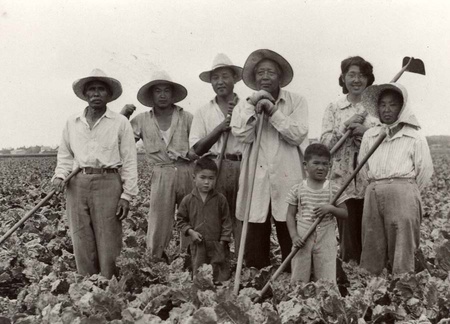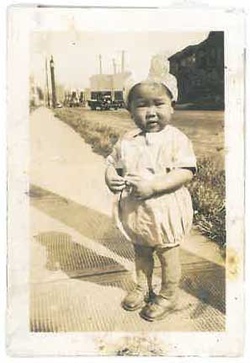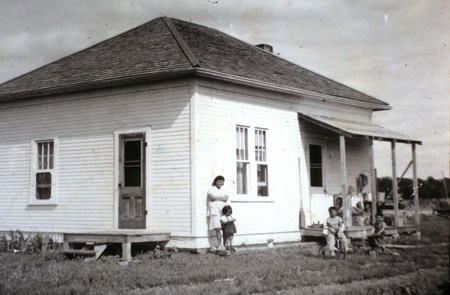When it comes to our Canadian Nikkei heroes, Art Kazumi Miki, the National Association of Japanese Canadians (NAJC) president from 1984 to 1992 who led the Redress movement on to victory on September 22, 1988, ranks amongst the top.
As I read through Art’s personal story yet again, I am struck by how close Canadian Nikkei once were when we lived in our coastal British Columbia communities: coming from the same prefectures, sharing culture and language, struggles and victories. The points of intersection were many prior to World War Two.
I wonder now what Redress might mean to younger Japanese Canadians (JCs) in 2015? Those who weren’t even born in 1988 have grown up in more racially “tolerant” times, often without much of a clue as to the deep racism and bigotry that their grandparents suffered largely in silence.
The struggle to right some of the wrongs of internment was a long and bitter one. Now, an entire generation has grown up not knowing about the significant contributions to Canada made by Dr. Tom Shoyama (1915-2006; member of Prime Minister Pierre Elliot Trudeau’s cabinet), Dr. Irene Ayako Uchida (1917-2013; pioneer in the field of medical genetics), artist Kazuo Nakamura, filmmaker Jesse Nishihata, poet and artist Roy Kiyooka, among many others.
Today, Art, 79, and wife, Keiko, live in Winnipeg where their three children, Geoffrey, Tani, and Jonathan also reside. His siblings are Leslie Miki (deceased), Joan Jalmarson (Richmond, BC), and Roy Akira Miki, CM, OBC, FRSC, poet (2002 Governor General’s award winner for poetry) and scholar (Vancouver).
* * * *
First of all, thank you very much for agreeing to do this interview which I would like to address to the younger generations of Yonsei and other Nikkei who may not have even been born at the time of Redress.
Given this, can I ask you to tell us a little about yourself? Your family’s immigrant history?
Both my grandparents came from Japan at the turn of the last century. On my mother’s side Tokusaburo and Yoshi Ooto came from Fukuoka in 1903, landed in Victoria and journeyed up to the Prince Rupert area. They lived in Port Ossington across the bay from Prince Rupert at a fishing cannery where many Japanese women worked. My grandfather was a fisherman and later become an employment broker for the fishing company recruiting Japanese to work on boats or work in the cannery.
My mother, Shizuko, was born in Port Ossington and lived there with her two brothers. As the children, Tameo, Shizuko, and Takeo were of school age the grandparents decided to move the family south in order to have better schooling. Relocating to the Fraser Valley, my grandfather established a berry and fruit farm in Haney in 1918. They had this farm until 1942 when they were forcibly removed from Haney.
On my father’s side, my grandparents, the Shintanis, came to Canada, I believe, in 1892. Unfortunately, when grandfather’s wife passed away in 1897 he took his small daughter to Japan where she died. He migrated back to Canada as a single man and became a naturalized Canadian as Yukutaro Shintani and worked in a saw mill in West Vancouver. He returned to Japan to marry Kiyo Miki through an arrangement. Both the Shintani and Miki families were from Karita. On marriage, Yukutaro changed his name to Miki because there were no Miki males. In 1899 the two migrated to Hawaii and worked on sugar beet plantations to save enough money for them to go to Vancouver.
My father, Kazuo, was born 1907 at a logging camp in Tynehead which is now Surrey. His father later became a salmon fisherman and then a shrimp fisherman. Yukutaro passed away in 1922. My grandmother Kiyo took the three youngest children to Japan to be raised by her sister and returned to Canada to support the remaining three children including my father.
Kazuo Miki and Shizuko Ooto were married in 1935 and lived in Vancouver on Alexander Avenue. I was the first born in Vancouver, followed by my brother Kunio (Les) and sister Joan. My father was a mechanic and just prior to the war worked as logging truck driver for Canal Logging Company owned by Kahei Kamimura.
In 1940 my family lived at the logging camp until I was injured in a freak accident when I was four years old. The accident was serious enough that the doctors weren’t sure whether I would live or die. Fortunately, I survived but was left with a noticeable permanent scar on the left side of my face. After the accident we moved into a house on my grandfather’s farm as I was beginning kindergarten and remained there until we moved to Manitoba.
So how did your family end up in Manitoba?
Arrangements were made with the Canadian government to have representatives from the Manitoba Sugar Beet Growers travel to the Haney area to recruit families as labourers for sugar beet farms in Southern Manitoba instead of going to internment camps. What attracted many families was the offer that they would not be separated unlike what happened when families were sent to an internment camp. For three days we travelled by train in old day coaches and arrived at Immigration Hall adjacent to the CPR Station in May 1942.
We were the second group out of the three that came to Manitoba that year bringing 1,075 Japanese to Manitoba. People were housed there until sugar beet farmers arrived with their trucks to select families they wanted to take them back to the farm. Families with several able bodied people were selected immediately but families with several small children and a few adults were left at the Immigration Centre sometimes for months. People commented that this process reminded them of a slave market.
Once on the farm the Japanese were not permitted to visit or travel without permission. The harsh winter conditions, the terrible non-insulated housing, and the short growing season made life difficult. We lived in a four room house with three families consisting of seven adults and three children. I recall that in November of 1942, my mother, who was pregnant, had to request special permission from the RCMP to travel to Winnipeg to have my brother, Roy.
We remained on the sugar beet farm for two seasons before moving to North Kildonan located on the outskirts of Winnipeg (Japanese could not reside within the boundaries of Winnipeg unless permission was granted by the BC Securities Commission). My father, Kazuo, received
special permission to work as a machinist in Winnipeg in order to support the family.The removal from the West Coast had a devastating effect on grandfather Ooto who was forced to do tedious and backbreaking work unlike on the berry farm. He had lost everything and was at an age where he should have been retiring. He passed away shortly after the move to North Kildonan. I felt that he died a broken man, having very little to give to his family and grandchildren.
 Art Miki and his family, uprooted from Haney, BC, ended up in Ste. Agathe, Manitoba, a small French Canadian town. Clockwise from the lower right: Art Miki, age 5; his younger brother, Leslie Miki, age 4; his grandfather Tokusaburo Ooto; his father Kazuo Miki; his uncle Tak Ooto; family friends Kunesaburo Hayakawa and Nori Hayakawa; his grandmother Yoshi Ooto. (Miki family photo)
Art Miki and his family, uprooted from Haney, BC, ended up in Ste. Agathe, Manitoba, a small French Canadian town. Clockwise from the lower right: Art Miki, age 5; his younger brother, Leslie Miki, age 4; his grandfather Tokusaburo Ooto; his father Kazuo Miki; his uncle Tak Ooto; family friends Kunesaburo Hayakawa and Nori Hayakawa; his grandmother Yoshi Ooto. (Miki family photo)
What happened to your family after World War Two?
In 1948, the Japanese were finally allowed to reside in Winnipeg but many had difficulty finding suitable accommodations because of racism and discrimination. I think my parents found it easier to buy a house in the poorer area of the city which they could barely afford. The first house was located on Alexander Avenue, coincidentally, the same street name as in Vancouver.
Although there were three adults and four kids living in the house, my parents rented out part of the upstairs to another family to help pay for the mortgage. When I reflect back in the early days in Winnipeg, I am astounded by parent’s resilience and fortitude to re-establish their life, both having to work long hours to make ends meet while living in crowded conditions. The pattern is similar to what new immigrants face today, usually living in the core area where accommodations are cheaper and then moving out to preferable residential areas once they had accumulated financial stability. Like most Japanese Canadian families education was stressed and sacrifices made by parents to provide that opportunity.
Can you talk a little bit about your parents? What kind of influence did they have on you getting into teaching? Where did you go to school?
As we grew up in Winnipeg, both my parents had to work to support the family. My grandmother lived with us in Winnipeg. My grandfather had passed away earlier. My father worked at Monarch Machinery all the time he was in Winnipeg. He passed away in 1969.
My mother worked at a leather tanning company initially and after she took bookkeeping she found a job with Neptune Fisheries and stayed there until she was over 60 years of age. She passed away in 2002. Our parents supported us by providing a place for us when we went to school although I had worked all through junior and high school and was able to pay for my education.
How did you get into the field of education?
I went into education by chance. I was in engineering when I met a high school friend who had returned to Winnipeg and was on his way to enroll at Teacher’s College. He invited me to go with him. Once there I was taken aback by the opportunities in teaching so I enrolled right on the spot. That was the best move I ever made. While I was teaching I went back to get my Science degree from University of Winnipeg in 1968 and my Master of Education degree from the University of Manitoba in 1975.
I graduated from teachers’ college in 1962 and taught six years before I became a vice-principal and within two years I became principal of Harold Hatcher Elementary School in 1974, a new school that was being built. I had complete autonomy in hiring staff and set up a school structure that was unique—a school with no grades. I enjoyed being a principal and in 1988 I opened a second brand new school. I was fortunate to be in a school division where the superintendent Vera Derenchuk was supportive of my involvement with the redress process as I had to arrange time off for travel.
I retired from teaching in 1993 the year I ran as a Liberal Party for the Federal election with Jean Chretien as leader. I lost by 200 votes to Bill Blaikie. Later I was appointed as a Citizenship Judge.
I think Roy (retired university professor, poet, and author of Redress) and I credit my mother for being willing to get involved in issues such as redress. Not a typical Nisei, she would speak her mind to authorities if she felt her kids were being picked on. She was always willing to listen if we were in trouble but more often would defend us. In that way, she was quite outspoken. She was a strong defender of redress and was proud that both of us were in the heat of the action.
© 2015 Norm Ibuki










